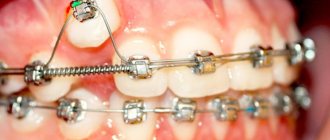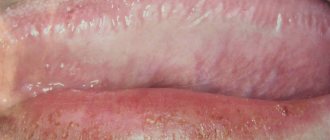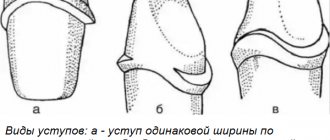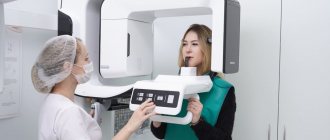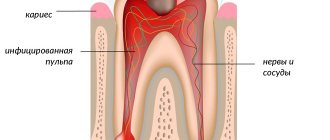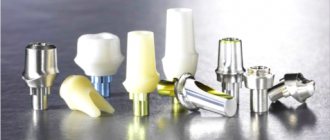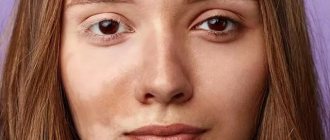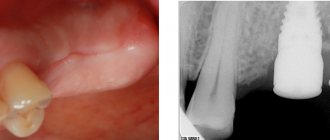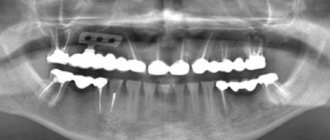Indications and contraindications for use
Before undergoing an aesthetic correction procedure using the Sculptra™ implant, it is necessary to carefully collect an anamnesis and identify the presence of absolute and relative contraindications (such as acute or chronic skin diseases, signs of infection or inflammation in or near the injection site). Biostimulant Sculptra™ should not be used in patients with allergies to any of its components.
Patient profile for aesthetic facial correction using Sculptra™:
- Age over 30 years (in some cases, it is acceptable to use an implant from 18 years of age)
- Any aging morphotype
- Reduced tissue elasticity, sagging skin
- Thinning of the skin and subcutaneous tissues
- Loss of facial volume
- Lipoatrophy
- Tissue ptosis
- Facial asymmetry
- Atrophic scars after acne
- Significant weight loss or planned weight loss
What operations can be performed using modern implants?
The implants that we use at the German Implant Center allow us to carry out all the most popular operations:
— one-stage operations, when a tooth is removed, an implant is placed, and it is loaded with a temporary structure,
— operations when it is necessary to carry out implantation simultaneously with bone grafting to increase the volume of bone tissue in edentulous patients,
— operations when a sinus lift is performed simultaneously with implantation.
The concept of our clinic, which we have already developed over more than 10 years of experience, is the following: as for surgery, we try to do everything in a minimum number of visits, since every extra incision is unpleasant, it leads to deterioration of trophism, additional scars, etc. and so on.
Preparation and carrying out the procedure
According to the instructions for use of Sculptra™, the volume of sterile water for injection (SWI) for hydration of the lyophilisate is 5 ml. Currently, American and European expert consensus recommends using 7-8 ml of SVDI for Sculptra® restoration. And according to the Russian consensus of experts, there are advantages in reconstituting Sculptra™ lyophilisate in one 8 ml SVDI bottle. The lyophilisate must be reconstituted at room temperature at least 2 hours before the procedure (there are recommendations - 24–48 hours) to ensure the necessary hydration of the material. Do not shake the bottle during the hydration period. When the implant is ready for injection, shake it gently immediately before use until a homogeneous suspension is obtained. Before use, wipe the rubber stopper of the bottle with an antiseptic, then, using a sterile 18G needle, take the required amount of suspension into a disposable sterile syringe. Next, you can add 1-2 ml of a 2% lidocaine solution to the bottle, and gently mix the lidocaine solution with the suspension with rocking movements. Thus, you should get 9–10 ml of a homogeneous suspension, the liquid phase of which is represented by 8 ml of SVDI and 1–2 ml of a 2% lidocaine solution. It is not recommended to store the collected suspension in a syringe for a long time, as particles settle.
Another method for reconstituting Sculptra™ lyophilisate is also being discussed.
Baumann K. et al. in 2021
showed that the physicochemical characteristics of a PLLA suspension immediately after the addition of SVDI and vigorous shaking are comparable to those obtained by longer hydration of the product. The researchers reconstituted the Sculptra™ lyophilisate immediately before injection by sequentially adding SVDI (5 ml, then 3 ml) and mixing thoroughly. Clinical studies are currently being conducted to confirm laboratory test data. These studies are important for clinical practice, as there is often a need for a finished product immediately before a procedure.
Application techniques in the facial area
Figure 2.
Facial areas recommended for use of the Sculptra™ implant
The Sculptra™ implant is injected subdermally, into the subcutaneous fatty tissue, since with superficial injections there is a risk of nodules at the injection site, which indicates an incorrect injection technique or an excessive amount of injected suspension. In some areas (temporal zone) it is recommended to administer the product under the SMAS, the superficial layer of the temporoparietal fascia, given the very thin layer of subcutaneous fat in this area (Fig. 2)
.
In some cases, the implant is inserted into the deep fat pads of the face (ROOF, SOOF, preperiosteal malar fat, Ristow's space, deep medial and lateral buccal fat) in the form of microboluses with a volume of no more than 0.2–0.3 ml, which, according to all experts , is a safe technique.
Massaging the insertion area to ensure uniform distribution of the implant is mandatory not only at the time of the procedure, but also in the next five days. This prevents the appearance of irregularities and the formation of nodules.
For injections, 26–27G needles with a length of 13–25 mm or 22–23G cannulas with a length of 38–70 mm are used.
For subdermal injections, a linear-retrograde needle technique is recommended. The required volume of suspension should be evenly distributed throughout the entire correction zone: on average, it is 0.1–0.2 ml/cm2. When using a cannula, the product is injected into the superficial fatty tissue (SAT) in a linear-retrograde fashion, in a fan pattern of 0.1–0.2 ml.
The Sculptra™ implant is not inserted into areas of high facial activity, in areas with thin skin and unexpressed subcutaneous fat, namely in:
- periorbital, including lacrimal and eyelid-buccal grooves;
- perioral, including the contour and red border of the lips;
- forehead and glabella area (eyebrow area);
- nose.
Photo 1.
A 65-year-old patient before and 6 months after the administration of 1 bottle of Sculptra™. Photo courtesy of D. Yu. Zakharov
Before
After
Advantages of Medent implants
Among the main advantages of the Medent design, it is worth highlighting the following factors:
- The titanium rod is fully compatible with dental systems from other manufacturers. Maximum compatibility is the result of an improved connection, namely cone and hex.
- Prevention of the use of substitutions and cheap counterfeits. You can verify the originality of the system - on the body of each implant there is a corresponding serial number, which does not allow for repetitions.
- Simplified and quicker installation of the Medent design is due to the presence of double threads and edges with cutting ends. These elements also help reduce bone resistance.
- The protective coating of the implant in the form of gamma ray treatment ensures its maximum sterility. Additionally, each product is double packaged.
- Protective coating of the surface of the structure with calcium phosphate and acids leads to an increase in the porosity of the system, which ensures high-quality fusion with the bone.
- A special set of tools has been developed for these implants, which greatly simplifies the installation process.
- The implant is distinguished by the shape of the titanium root and the corresponding size of the coils, which favor rapid primary stabilization and a further period of rehabilitation.
The German implant manufacturer provides a lifetime guarantee on the use of Medent designs, which is the best proof of their high quality.
Adverse reactions
Adverse reactions from implantation, described in the instructions for use of Sculptra™, are non-specific and are associated with the injection procedure itself: short-term bleeding in the area of skin puncture, transient pain at the injection site, redness, ecchymosis, hemorrhage, mild swelling. These phenomena, as a rule (according to the clinical experience of Russian experts), resolve spontaneously within 2–7 days.
Other adverse reactions are mainly due to errors in the preparation and/or administration of the product. A characteristic element of incorrect insertion of the Sculptra™ implant is a nodule. The reason for the appearance of nodules at the injection site is most often a superficial injection, an excessive volume of the injected product or its incorrect restoration, an incorrectly selected area (that is, areas with weakly defined subcutaneous fatty tissue: lips, forehead, glabellar area, skin above the upper and lower lip) . It is also extremely important to instruct the patient to self-massage the injection areas for 5 days after the procedure.
Combination with other aesthetic procedures
It is possible to combine Sculptra™ implant injections with hardware and other aesthetic correction methods in accordance with the protocols. If the zones and depth of injection do not coincide, then Sculptra™ can be used in one patient visit in combination with fillers, skinboosters, botulinum toxin A. If, after using the Sculptra™ implant, the patient is planning a laser therapy session, chemical peeling and other aesthetic procedures associated with active skin response, there is a possible risk of an inflammatory reaction at the implant site. Sculptra™ is administered after the skin has completely recovered from such procedures.
Using the Sculptra™ implant to correct extrafacial areas
According to international and Russian experts, the Sculptra® implant is indicated for the correction of sagging and atony of the body’s skin, changes in relief, tissue ptosis, local atrophy after liposuction, as well as stretch marks and cellulite.
Areas recommended for use of the implant: neck, décolleté, inner surface of the shoulders and thighs, axillary zone, supra-elbow and patella zone, abdomen, buttocks.
The use of Sculptra® for aesthetic correction of the breast area, dorsum of the hands, calf area and genital area is not recommended due to the lack of safety and effectiveness data and positive experience in these areas.
Before starting to use the Sculptra™ implant, it is important to consider the following aspects that may affect the result: the presence of significant ptosis and excess skin, lifestyle, excessive sun exposure, smoking and poor nutrition, menopause. All these factors can lead to a decrease in the body's individual response to the injection and require an increase in the number of sessions and/or the need to increase the total volume of the implant administered.
The use of the Sculptra™ implant for aesthetic correction of the body (the area below the edge of the lower jaw) always involves additional dilation, at least twice as large as the standard one. That is, after preliminary reconstitution of the Sculptra™ vial in 8 ml of sterile water for injection (WFI), immediately before injection, 2 ml of a 2% lidocaine solution and 6-10 ml of WFI are added to the suspension, so the final volume of the suspension is 16-20 ml. The concentration of PLLA with a total suspension volume of 20 ml is 0.75% (7.5 mg/ml). For mixing, it is convenient to use a 20 ml syringe to aspirate 8 ml of suspension from the bottle, 2 ml of a 2% lidocaine solution and 6-10 ml of SVDI. Using a sterile connector, transfer the contents into smaller syringes (1 or 3 ml) for injection. Typically, one bottle of Sculptra™ is used in one session per area equivalent to an A4 page. This recommendation applies to all areas of the body.
After the procedure, it is necessary to massage the injection area for several minutes. Patients are recommended to massage this area for 2 minutes 2 times a day for 5 days after the procedure. Another important post-procedure recommendation is to avoid physical activity and sun exposure for the first 24 hours.
Skin lifting typically requires 2-4 injections of the Sculptra™ implant at intervals of at least six weeks. In most cases, the first results appear within 2–3 months.
To maintain the effect, additional injection sessions are recommended every 12–18 months, depending on the degree of loss of skin elasticity.
Photo 2.
Improving the relief of the skin of the neck and décolleté, reducing the depth of wrinkles in a 45-year-old patient after the introduction of the Sculptra™ implant (2 sessions, 1 bottle each). Photo courtesy of I. P. Dmitrieva
Before
After 8 months
Photo 3.
Reduction of skin laxity, improvement of the relief of the inner surface of the shoulder in a 69-year-old patient after the introduction of the Sculptra™ implant (2 sessions, 2 bottles each). Photo courtesy of I. P. Dmitrieva
Before
In 6 months
Photo 4.
Treatment of cellulite and sagging skin of the buttocks. The result of inserting the Sculptra™ implant into a 45-year-old patient. 2 bottles were injected in 1 session. A subcision technique was used and simultaneous insertion of the Sculptra™ implant into the subcutaneous layer using a 22G cannula. Photo courtesy of I. P. Dmitrieva
Before
After 3 months
What is a quality implant?
From my point of view, a high-quality implant is an implant that is produced by a company that has been on the market for decades, which has a huge clinical base, which has randomized studies, and it’s not just that “my grandmother said that this implant is the best.”
Such companies - and these are Nobel, and Straumann, and Ankylos - have many years of research that show how much bone tissue loss occurs near the implant, for example, after five years, ten years, fifteen years. And before releasing something to the market, companies research it for a very long time, and all this goes through multi-stage testing.
The optimal metal used in all implants
This metal is titanium. And it should be noted that, for example, pure titanium takes root very well, but pure titanium is not mechanically strong enough. And therefore, the alloy that I mentioned, Roxolid from the Strauman company, is an alloy of titanium with zirconium, titanium is alloyed with zirconium. Zirconium is also a bioinert metal; it does not impair the quality of engraftment in any way, and by alloying titanium with zirconium, the strength increases many times over.
Can the composition of the implants further affect its survival rate?
Let's start with the fact that the implants we work with are all proven, and they are the best in the world today; their survival rate is almost one hundred percent on these systems.
There is a type of implant, there is a surface, there is a macrosurface, there is a microsurface.
Nobel implants have plasma spraying, Straumann has a SLActive surface, where the implant is first processed in several ways without access to oxygen, and then SLA implants are delivered to our clinics in special flasks filled with a patented solution, where, again, oxygen access to the implant is blocked.
In both Nobel and Straumann, due to what I described above, the process of osseointegration into the bones is faster.
Why a high-quality implant cannot be cheap?
A high-quality implant cannot be cheap because:
Firstly,
Enormous expenses have been invested in its development, in its clinical research, in its testing. Entire institutes test, experiment and observe how certain developments proceed in the future.
Secondly,
The technological chain for high-quality production of implants is a certain base, equipment, and stages. And in order for everything to be carried out at a high level, and for it to be done by highly qualified specialists, it cannot be cheap.
When I was studying at the Goethe University in Frankfurt (I took a year-long specialization), research at this university showed that inexpensive implant systems from little-known manufacturers often have surfaces contaminated with residues of mechanical processing, residues of chemical etching, and residues remaining on the surface of the implant. various salts. And the implant, in order for it to osseointegrate well into the bone, must have such a spongy 3D surface so that the bone adheres very well and grows into the body of the implant.
And this surface of inexpensive systems is not properly cleaned of impurities. And inexpensive competing manufacturers are trying to get the “same surface as well-known brands”, but the technological base or little research experience does not allow them to do this.
conclusions
Stimulation of neocollagenesis to restore the volume and biomechanical properties of soft tissues is a promising method for correcting age-related changes. Modern concepts and strategies of rejuvenation are not aimed at correcting a specific wrinkle, but at restoring the harmonious appearance of the face and body as a whole, improving the quality of the skin and returning it to a healthy, youthful appearance. Most patients are interested in techniques that provide long-lasting results. The use of the Sculptra™ implant both as “monotherapy” and in combination with other methods of aesthetic correction allows us to adequately respond to these challenges of the time.
Advantages
Hiossen implants quickly became one of the leaders in their market segment and won the recognition of world experts. The company is constantly working to create the latest technologies and means for correcting dental problems, using in its work the results of numerous research and analytical works. Thanks to this, high-quality and efficient designs are available that are accessible to almost everyone.
What are the advantages of using these structures?
Availability
Compared to other products from manufacturing companies of similar products, Hiossen stands out due to its affordable price and high level of quality and performance.
Lifetime
The Hiossen system involves the use of high-strength titanium, which guarantees strength, resistance to constant loads and a long service life without loss of original properties.
No risk of rejection
The implant core is processed using a special CMP method, which makes it possible to successfully imitate the natural structure of the jaw bone of any person. This allows the rod to heal much faster due to the fact that it is covered with tissue and becomes part of the bone.
There are practically no cases of rejection or loosening. Immediately after fixing the implant, its titanium base begins to act as a tooth root, completely repeating its functions.

